
Story updated
The winged Dream Chaser’s “SUV-like” flexibility to act as both a crew transporter and “specialized research laboratory,” combined with a global “runway landing capability,” offer significant competitive advantages in terms of science and safety in the “new space race” to quickly develop a cost-effective “space taxi” for NASA, Mark Sirangelo, corporate vice president of Sierra Nevada Corporation (SNC) Space Systems, told AmericaSpace in concluding Part 5 of our exclusive, one-on-one interview series.
Dream Chaser’s spacious and flexible interior design allows a multitude of practical research benefits such as flying a uniquely specialized science lab in orbit for studies that can’t be done inside the International Space Station (ISS), for technical as well as safety factors. The ISS’s entire reason for existence is to benefit science and expand our exploration of the cosmos in ways not otherwise possible.
“We call it a space utility vehicle like an SUV. You can take seven people or you can take the seats down to add more cargo for an interchangeable activity,” Sirangelo said.
“For example you might want to test something on the station that isn’t testable on the station right now.”
“It’s a supplemental research vehicle that could have dedicated equipment.”
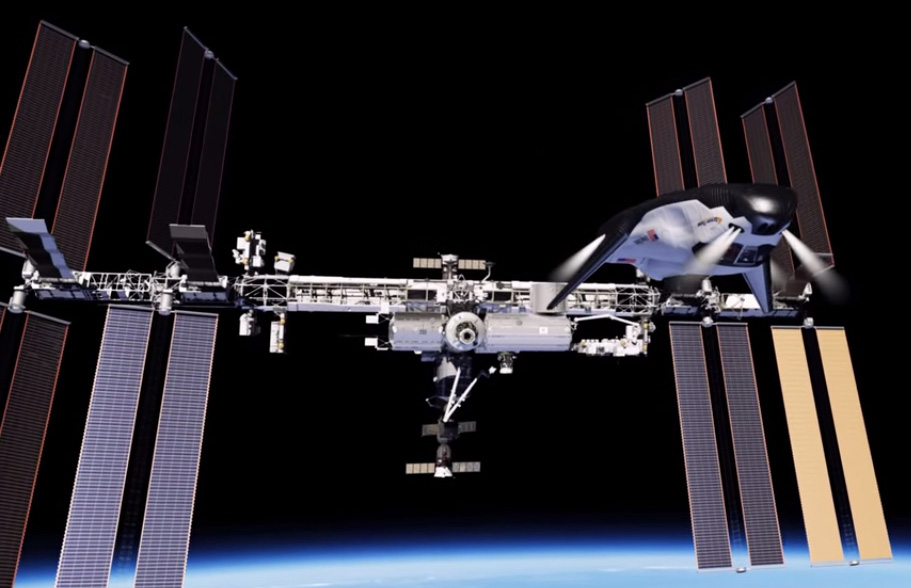
Dream Chaser is a reusable, manned space plane being developed by SNC to restore America’s capability to ferry American astronauts from American soil to low-Earth orbit and the International Space Station (ISS)—with funding from NASA’s Commercial Crew Integrated Capability initiative (CCiCAP) under the auspices of the agency’s commercial crew program.
The lifting body spacecraft is essentially a mini-shuttle about one-third the size of NASA’s now retired space shuttle orbiters, and thus has the totally unique capability to land on runways worldwide. That’s a feat its other competitors—developing capsules—can’t match and which simultaneously offers ample positives for science and potentially saving lives.
“A runway landing offers immediacy in case of returning sick astronauts or critical research samples …. to a researchers’ home city.”
“Dream Chaser can land anywhere. Its designed for commercial runways.”
Furthermore, it could “stay on orbit for a year or longer.” And since it flies autonomously, cargo-only versions to resupply the ISS like Cygnus and Dragon are also entirely within the realm of possibilities down the road.
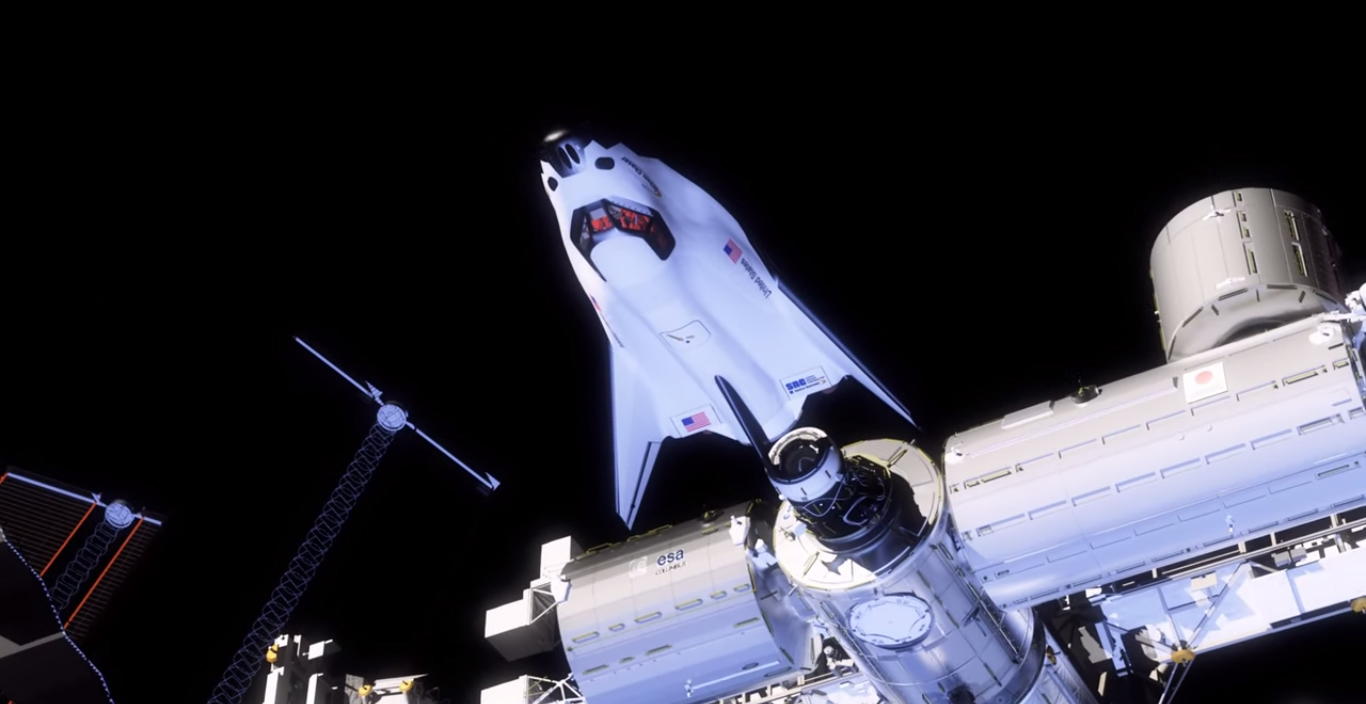
Three American aerospace firms—Sierra Nevada with Dream Chaser, Boeing with CST-100, and SpaceX with Dragon V2—are vying for NASA’s multi-billion dollar contracts to build the private sector spaceships to fly astronauts to the space station by late 2017, using seed money from NASA’s Commercial Crew Program (CCP) in a public/private partnership.
Describe the Dream Chaser’s flexibility regarding crew size and cargo.
“We call it a space utility vehicle like an SUV. So you can take seven people or you can take the seats down to add more cargo for an interchangeable activity. The mix of crew and cargo will be whatever that mission needs. The question is more, if we don’t have people then we can take up cargo. It’s reconfigurable inside so we can be all crew or all cargo without redesigning the vehicle.”
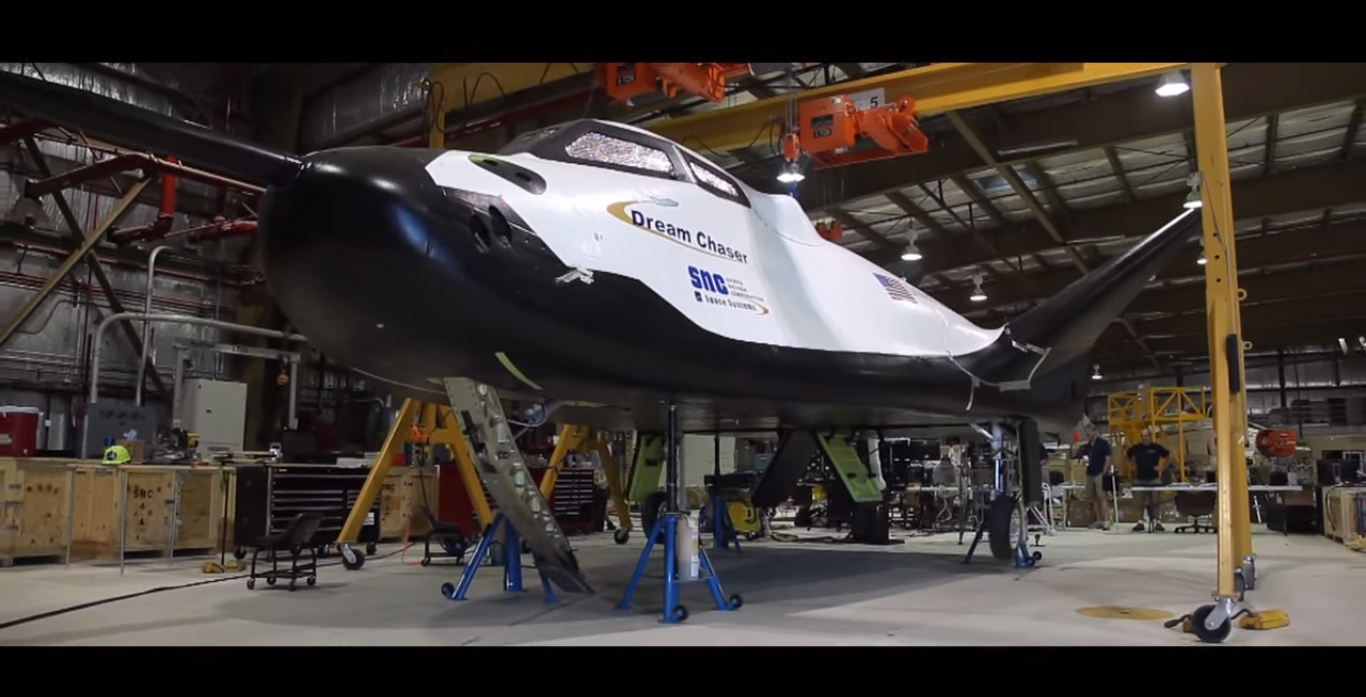
Let’s delve into using the inside of Dream Chaser as a science laboratory, something very appealing from a scientist’s perspective. How big is it?
“We are looking at variants for our vehicle for different missions besides the crew vehicle. You continue to upgrade the vehicle as you move forward.”
“The inside space is about the same volume as one of the modules brought up to the station on the shuttle. We need to learn how to change the inside of the Dream Chaser into a working laboratory. Opportunities for new technologies, like a laboratory, robotics and servicing for the different variants could also come from other countries.”
And as we discussed in detail in Part 4, Sierra Nevada has laid the foundation for the vehicle’s future global expansion by exploring the reconfiguration or construction of international versions of Dream Chaser with 21 space agencies, including ESA (European Space Agency), DLR (German Aerospace Agency), and JAXA (Japanese Aerospace and Exploration Agency).
How long can Dream Chaser stay in space? Describe its unique capabilities as a research laboratory and more.
“Dream Chaser has the capability of staying on orbit for over a year, or longer, uncrewed. So once it gets up to the station the idea is we could be a supplemental research vehicle that could have dedicated equipment on it, because we can fly it back home.”
“For example, you might want to test something on the station that isn’t testable on the station right now, using different kinds of instruments, sensors or pods for the experiments. We could outfit Dream Chaser for that and let it be on orbit for whatever duration it needed. And then bring it back with the experiments.”
“And then we could outfit the vehicle for the next type of experiment. That’s for something you can’t do for the space station.”
Well, one year or more on orbit for Dream Chaser would be considerably longer than the other space taxis, like Dragon V2 and CST-100, which meet NASA’s minimum requirement for a stay in space of about one-half year or so.
Describe its capability as a lifeboat and for quick getaways, and the resulting science implications?
“We have a very unique station capability that no one else has. We can come back from the station in six to eight hours generally and land at a runway in America—at less than two Gs!”
“For example if one is transporting critical experiments or sick astronauts or something that really requires special or quick handling, we can do that more rapidly than anyone in the world. And we can bring it back to a runway in Florida (KSC) or conceivably in Texas [near NASA’s Johnson Space Center or elsewhere] or some other place in the U.S.”
“Whereas our other competitors are landing in the water or far out in the desert somewhere. And they are coming in as a capsule does, at considerably higher G forces.”
“So if you are working on the next breakthrough in bioscience, and you want to make sure you bring it home, what would you rather do? Bring it home in a quarter of the time and a third or half the G forces to a runway in the U.S. versus going out to the ocean or desert somewhere!”
“So that’s the type of thing we feel we have an advantage on.”
“To date, SpaceX has taken something like 30 or more hours to return samples after the Dragon’s splashdown.”
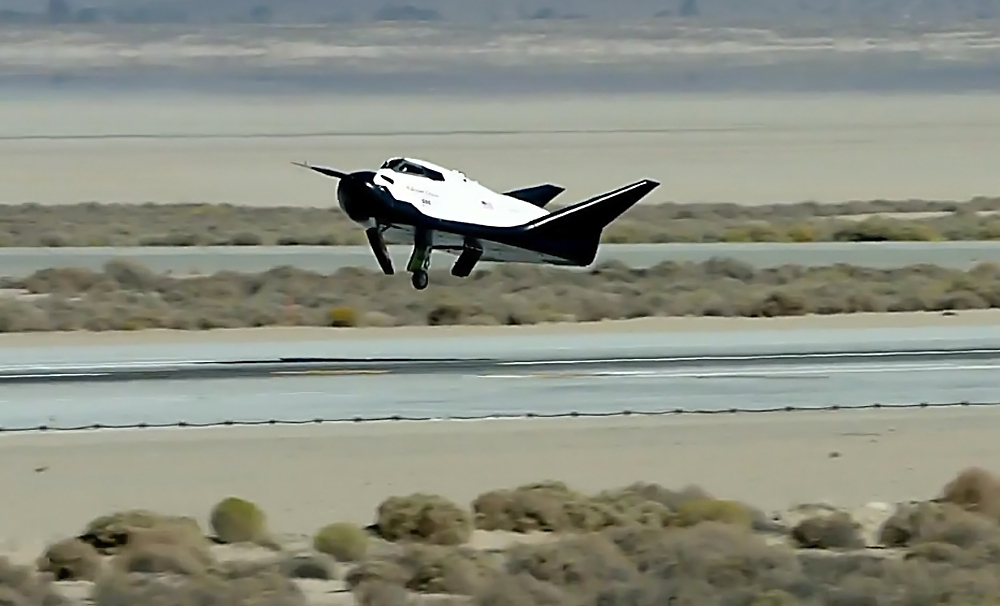
So that ability to bring delicate research samples home quicker and gentler could be a boon and fantastic benefit for the science experiments!?
“Yes, we can not only bring it home faster, safer, and with less stress but we can also bring to your home city where you can pick it up, such as for the team at Texas Medical Center that are doing bioscience and biomedical research.”
Describe Dream Chaser’s capability for different types of missions.
“Dream Chaser is designed for two types of launches. And it is designed to be ‘rocket agnostic’ so it can launch on different launch vehicles.”
“One is for human launches which requires certification for human flight. Then there are the cargo/laboratory uncrewed flights. And that is certainly possible for us.”
For details about launching on the primary Atlas booster from Florida and alternatives, like Delta, Ariane V, and H2B, read the earlier parts of this series. Boeing’s CST-100 will also launch atop the Atlas V. Read the ULA interview story regarding the Atlas V rocket and required pad modifications here.
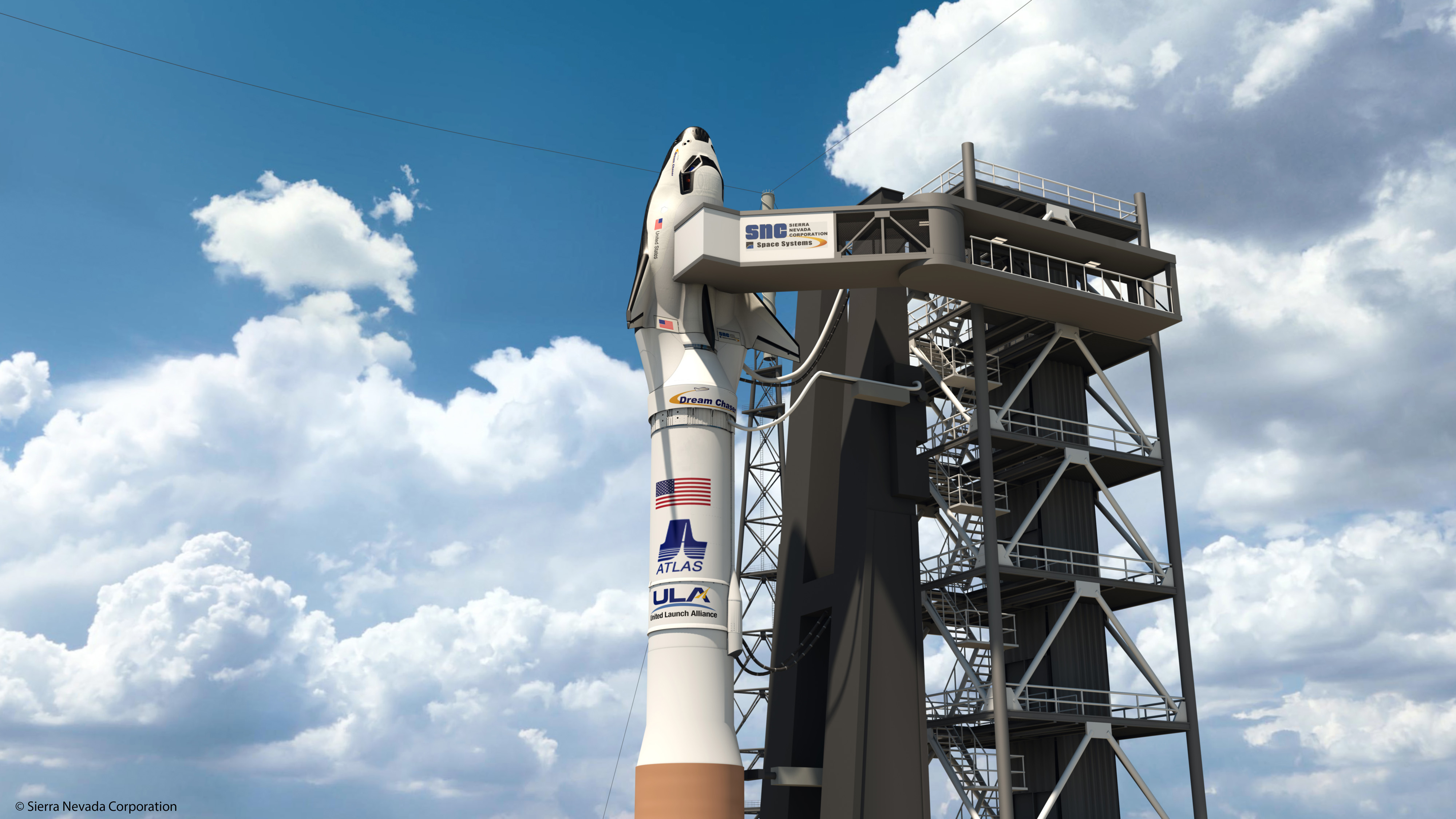
Well, in that case of an unmanned version of Dream Chaser, then it seems like you could bid on NASA’s next CRS (Commercial Resupply Services) contract, is that right? Boeing is also considering that option. (Read the interview with Boeing’s Chris Ferguson here.)
“Yes, we could!”
Describe the details of Dream Chaser’s reusability?
“We have a very strong case on reusability.”
“We are expecting to get 30 or more flights out of one of our vehicles. To date there hasn’t been a capsule yet that’s been reused and gone back up to space in 60 years of capsules.”
“The others say they can reuse the capsules. But there are stresses. I’m not saying they can’t do it. But you have to go a long way before you put people back in the vehicle, and then get it back up. They will have to prove a lot.”
“Whereas the Shuttle Discovery had 39 missions, as complex a vehicle as the shuttle was and do it with ’70s technology.”
“So it’s a big benefit from us. We are reconfigurable inside the vehicle so we can be all crew or all cargo without redesigning the vehicle.”
“So reusing is not easy. But 39 missions of the same spacecraft is not something to sneeze at. And it probably could have flown more missions if there were more needed. The vehicle wasn’t stopped because of its inability to go back up. It was stopped because ET tank production stopped.”
How many Dream Chaser vehicles do you plan to build? Boeing is projecting about three CST-100 capsules and about 10 flights each. (Note: Read this writer’s interviews with Chris Ferguson here and here.) SpaceX also says the Dragon will be reusable.
“Well, it’s like aircraft and depends on the need. Initially we think we’ll start with about three to five vehicles, flying about 30 flights each.”
What is the projected turnaround time between flights?
“We think about 45 days to 60 days. It also depends on rocket launch slot availability. Part of it is you can be ready to fly, but do you have the launch [pad] availability. So we think we could do 4 to 6 flights per year on a vehicle, to be conservative.”
It should be noted that the commercial crew flights for NASA have to complete for launch slots with all of ULA’s other unmanned launches off pad 41 at Cape Canaveral, Fla., for various customers besides NASA. ULA does not have a pad solely dedicated to commercial crew launches.
The shuttle turnaround time generally varied between about three months and longer by comparison during its three decades of operation.
“Dream Chaser is better than that. We’re like a regional jet. We have a lot more modern equipment. The computers are far more programmable. Its smaller and less complex.”
What’s ahead for Dream Chaser?
“The three big things ahead of us are the continuation of the atmospheric flight test program this fall, the delivery of the orbital vehicle and the preparations to ready for the first launch,” Sirangelo said.
Dream Chaser’s inaugural launch atop an Atlas V rocket from Florida is slated for November 2016 on a fully autonomous, unmanned orbital test flight. That will be followed by the launch of the first manned Dream Chaser before the end of 2017, under NASA’s current timetable.
Furthermore, SNC has already begun building the orbital vehicle and bought the Atlas V rocket.
The Dream Chaser design builds on the experience gained from NASA Langley’s earlier exploratory engineering work with the HL-20 manned lifting-body vehicle.
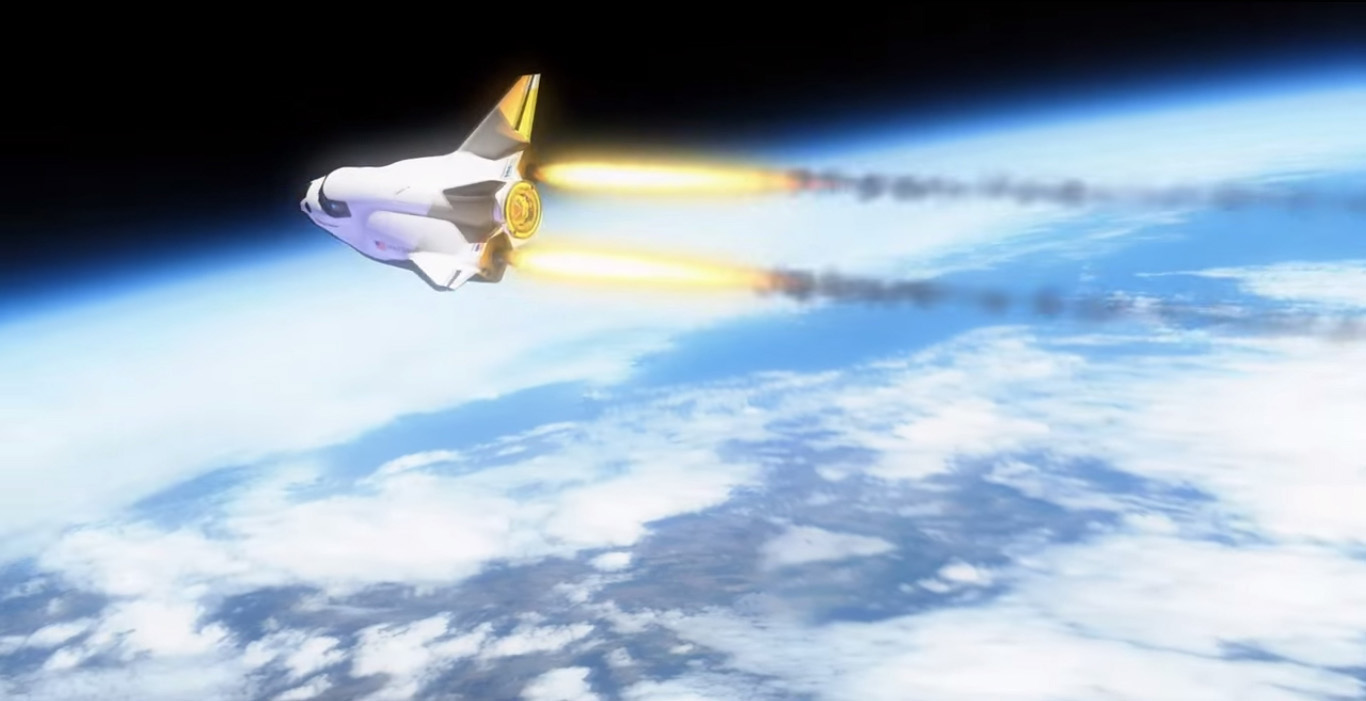
For complete details on the SNC Dream Chaser, be sure to read the entire five-part interview series with Mark Sirangelo.
In Part 1 of this series, Sirangelo described SNC’s assembly and upcoming free-flight drop test program for the atmospheric test vehicle that will pave the path to the eventual Dream Chaser orbital vehicle, just as the Enterprise did for NASA’s shuttle orbiters in the 1970s.
Part 2 is focused on how SNC is boldly pushing forward with the orbital vehicle build, even before the winners of NASA’s highly coveted and prestigious commercial crew vehicle contracts are announced by NASA.
Part 3 discussed the flight plans and crew for the first two missions in 2016 and 2017.
Part 4 discussed SNC’s international partnerships with ESA, DLR, JAXA, and 21 space agencies to enable future international variants of Dream Chaser.
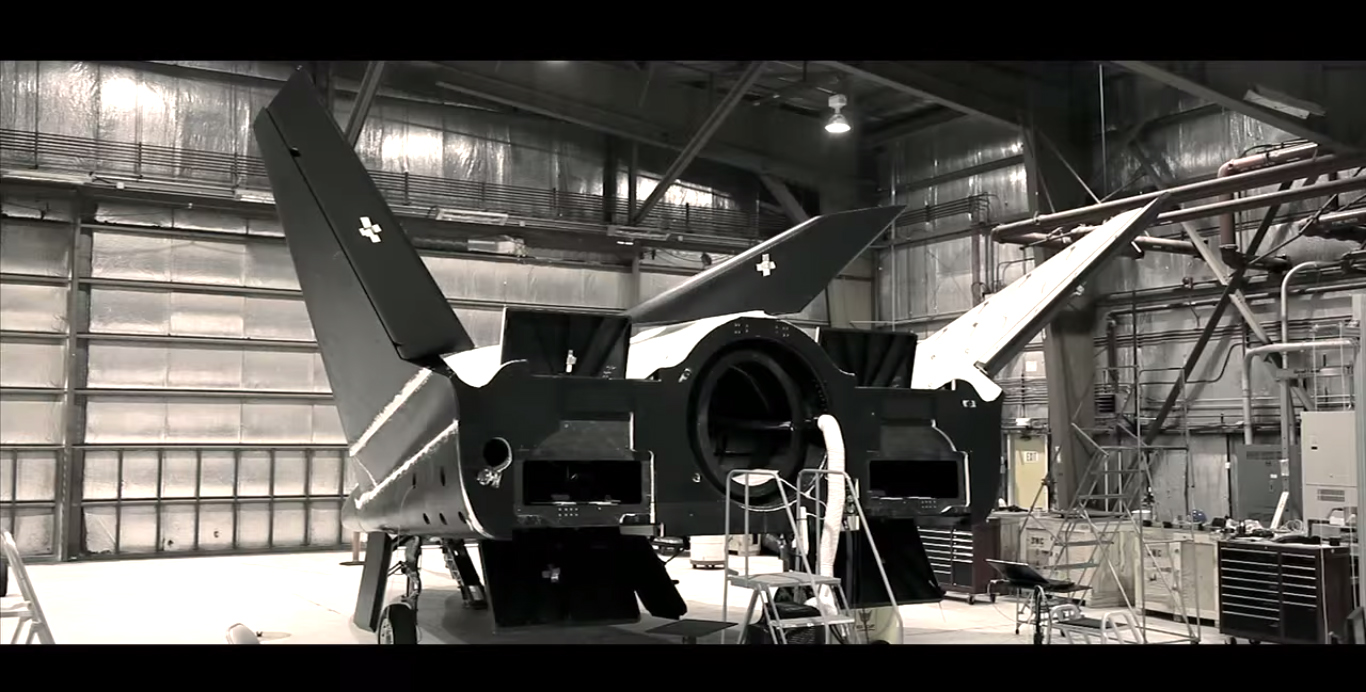
America totally lost the ability to launch humans when the shuttle program ended three years ago, following the final launch of Space Shuttle Atlantis in 2011 on the STS-135 mission to the ISS, commanded by Chris Ferguson.
Mark Sirangelo, as well as his staff of veteran space shuttle commanders Steve Lindsey and Lee Archambault, and the entire SNC “Dream Team” spread across 30 U.S., states are on a mission to right that with Dream Chaser.
“We think it’s about time that we get an American built vehicle launching from America to take U.S. astronauts to space. We feel like we are carrying the torch forward from the 135 shuttle flights and bringing the history of NASA along with us as we do this,” Sirangelo emphasized.
Finally, all three aerospace teams await NASA’s high stakes decision. NASA’s Commercial Crew Program office is expected to announce the contact winner(s) to build America’s next crew vehicles in the next program phase, known as Commercial Crew Transportation Capability (CCtCap), “sometime in September,” NASA News spokesman Allard Beutel confirmed.
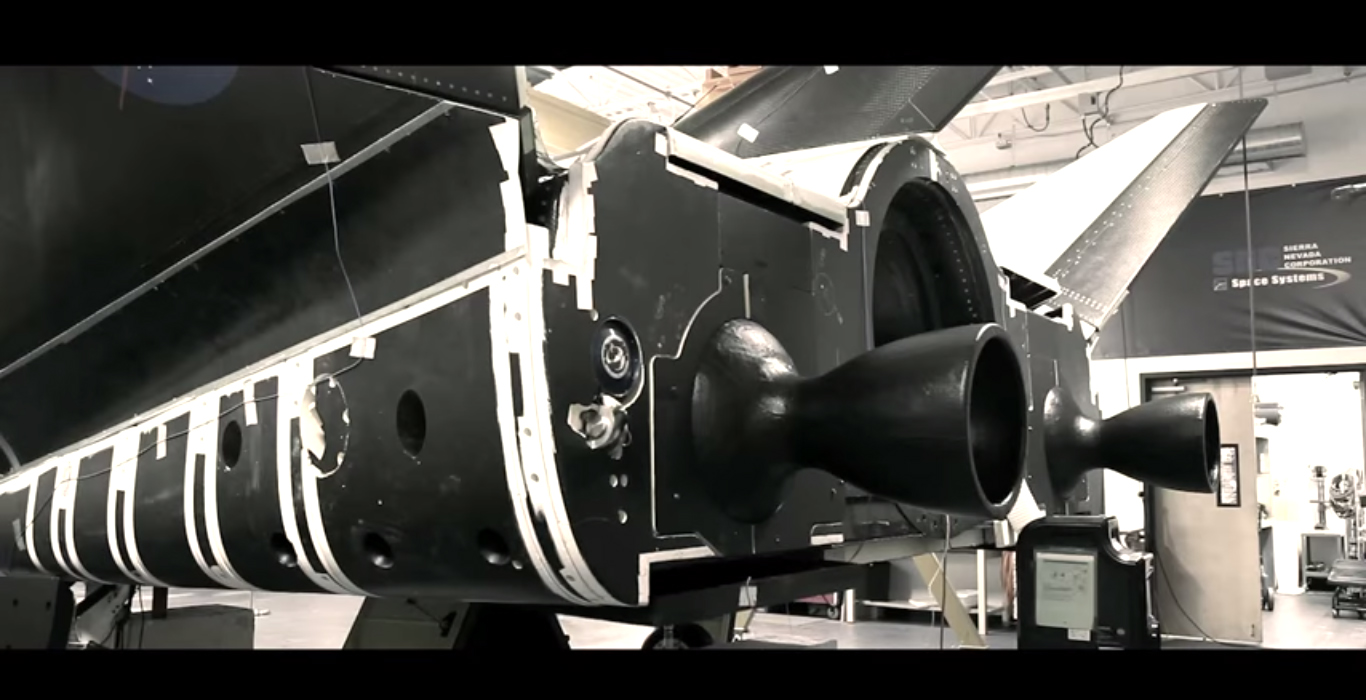
Be sure to read Part 1, Part 2, Part 3, and Part 4.
Stay tuned here for continuing developments.
Want to keep up-to-date with all things space? Be sure to “Like” AmericaSpace on Facebook and follow us on Twitter: @AmericaSpace
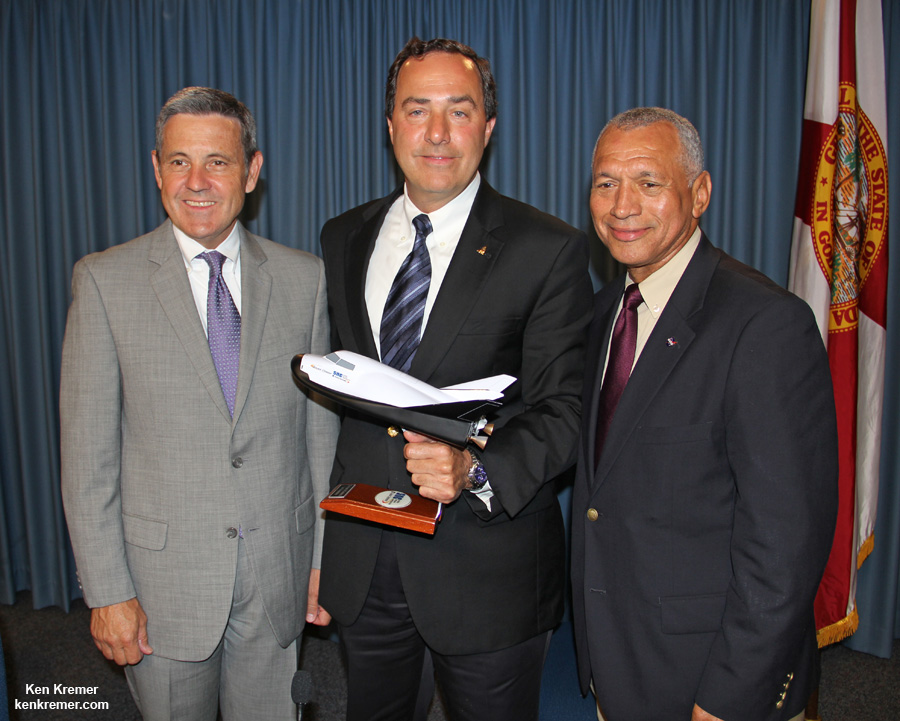
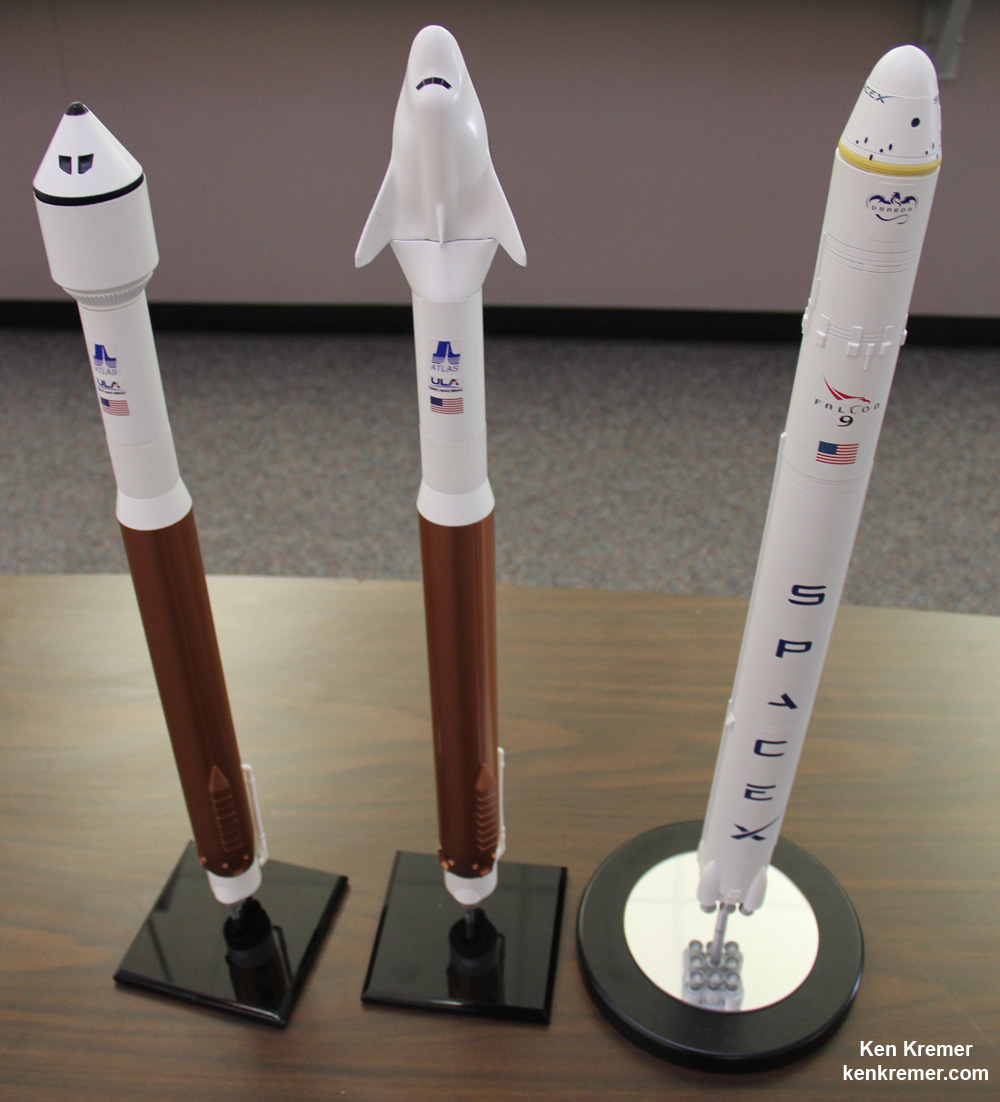
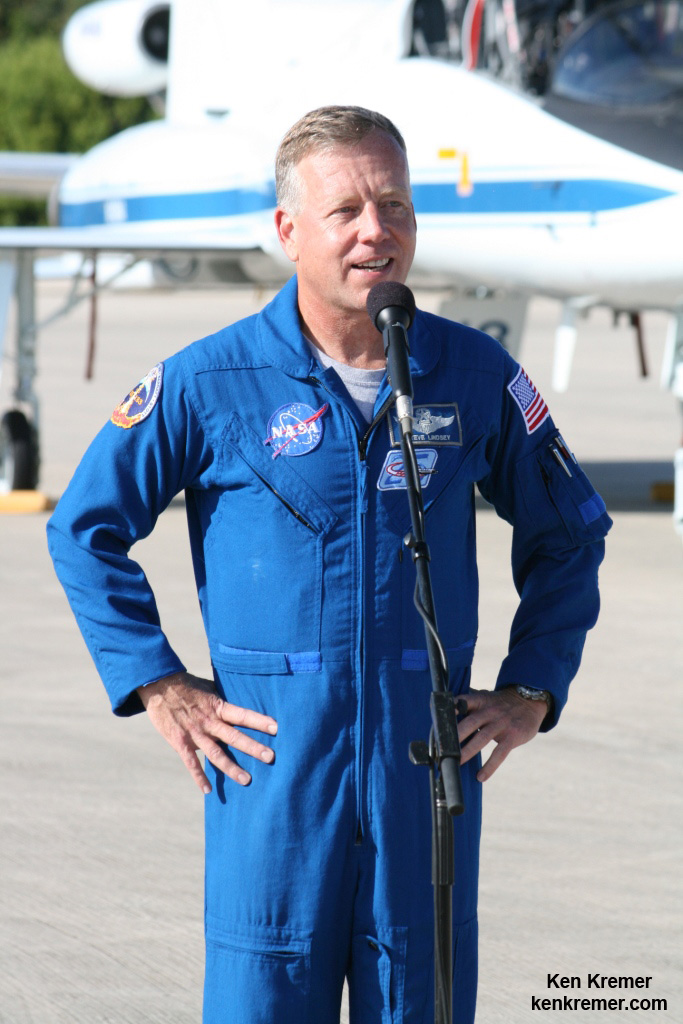




Kudos to Ken Kremer for these excellent articles on the SNC Dream Chaser. In my opinion, this is and should be the top choice for CCtCAP from NASA. Let’s hope that the decision is not political. NASA should also consider that this concept was developed at NASA Langley years ago with considerable testing completed on their HL-20 vehicle.
Dream Chaser will make a great second choice if two is chosen. I see NASA choosing 1 vehicle that is 100% all American(SpaceX Dragon) and another. I really wish the Dream Chaser leaders will open up discussions with SpaceX for use of the Falcon Heavy or F9 vehicle launching from pad 39A. To not have both SpaceX & Dream Chaser teams actively working on preparing the F9 for use with Dream Chaser is a big mistake for the DC team. They need to ween themselves off of the Atlas V booster. That shows a really big lack of responsibility on their part.
Way to Go SNC. My best friend here is North Carolina is a SNC- Durham Engineer.
Dream Chaser does have advantages but we should be cautious about over hyping them. Landing at runways is good, but landing anywhere (on earth and elsewhere) is better. We have yet to see what operation costs will be compared to other choices. I am glad it’s in the mix. If NASA only funds one, this should be the one.
Boeing doesn’t need the funding and should they choose not to go forward I will not shed a tear. If they do, great because competition is a good thing.
The SpaceX Dragon will have a future regardless because it is meant to be much more flexible with a wider range of missions than Dream Chaser. Dragon will land on any rock. MCT is the jumbo Dragon.